Kamotou Hamono
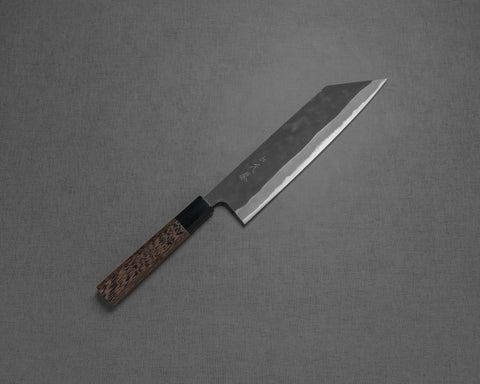
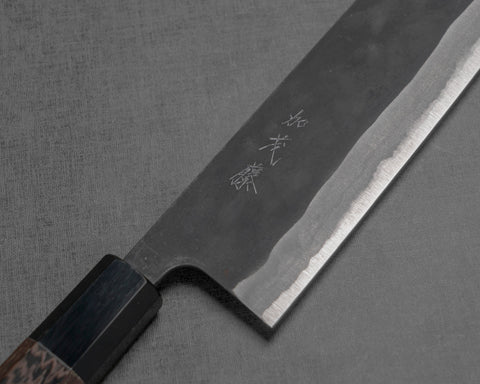
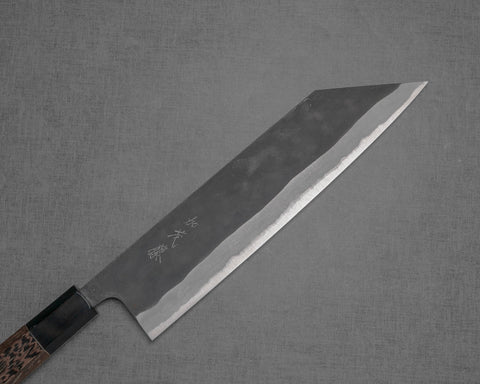
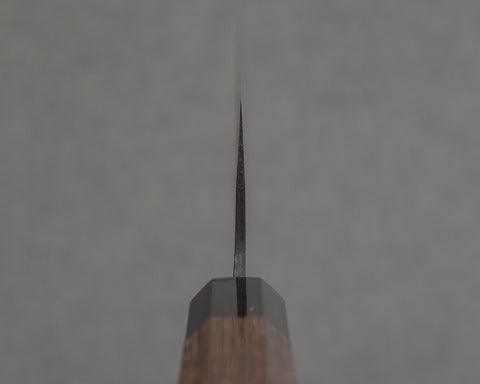
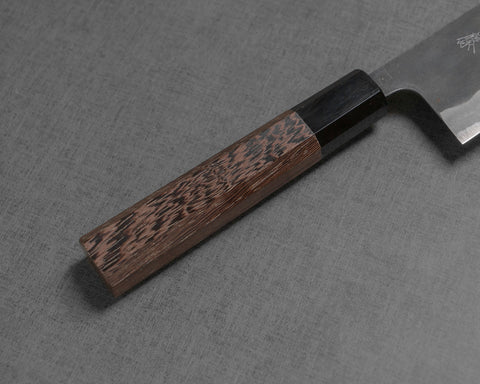
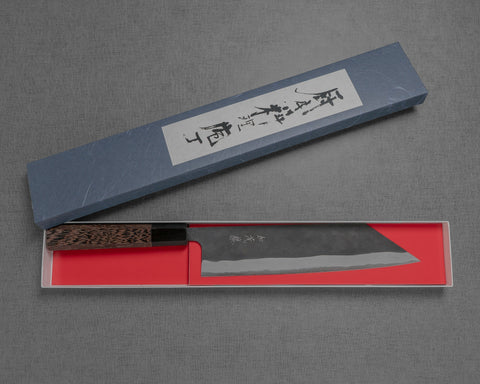
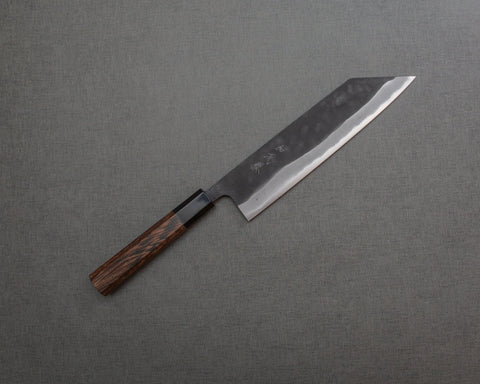
Shiro Kamo Aogami Super Kurouchi Kiritsuke Gyuto with Wenge Buffalo Horn Handle
Pickup currently unavailable
A sturdy Gyuto made of Aogami Super as core steel and soft iron as cladding, with an outstanding hardness up to 64 HRC. Smooth tapering to the edge for best cutting performance. The Kurochi (blackened blade) adds a touch of brutalism while the kasumi complements the knife with subtle gracefulness.
Spec:
- Origin (Made in): Echizen, Fukui Prefecture, Japan
- Craftsman: Mr. Shiro Kamo
- Brand: Kamotou Hamono
- Knife Type: Kiritsuke Gyuto
- Blade
- Construction: San Mai
- Grind: Double-edged Blade (50/50 Grind)
- Hagane (Core Steel): Aogami Super (Blue Super)
- Jigane (Cladding): Soft Iron
- Hardness: 63-64 HRC
- Hand-forged, hand-ground, hand-sharpened
- Blade Finishes:
- Kurouchi
- Kasumi Polish
- Blade Length: 210mm (8.3") / 240mm (9.4")
- Blade Height (at heel): 48mm / 48mm
- Spine Thickness
- Above heel: 2.4mm / 3.2mm
- Middle: 1.8mm / 2.0mm
- Handle
- Shape: Hachikaku (Octagonal)
- Material: Wenge
- Kuchiwa: Black Buffalo Horn
- Length: 134mm / 139mm
- Overall Length: 364mm / 397mm
- Weight: 170g (6.00oz) / 213g (7.51oz)
- Hand Chiselled mark: In Japanese Kanji "Kamotou" (加茂藤)
About Kamotou Hamono 加茂藤刃物
Master Shiro Kamo is the third generation blacksmith of Kamotou Hamono, a small artisan knife workshop based in Takefu City, Fukui Prefecture, Japan. He started helping his father in the workshop when he was a small kid and started making knives at the age of 25. He was certified as a traditional craftsman at the age of 45. And for decades, Mr. Kamo perfected forging techniques that make knives easier to sharpen while maintaining superior edge retention capabilities. Now in his 60s, he works on preserving and passing down the traditional crafting methods to his disciples (the youngest being 19 years old) at Kamotou Hamono.
Care:
Aogami Super (Blue Super) steel is considered the most superior Japanese high carbon steel for knife making. Despite some corrosion resistant quality (for a carbon steel), it is not stainless, therefore you should wipe your knife dry after each use. Patina will develop over time. Rust may develop if left in prolonged contact with water or acidic food. Use a rust eraser to clean if rusts develop. Avoid cutting into bones, frozen foods, hard fruit pits.
Cutting Surface:
Recommended cutting surface: wood, rubberized boards and high-end composites, and quality plastics such as polyethene make acceptable cutting surfaces, and will help protect and prolong knife’s edge. AVOID glass, metal, countertops, and other rigid, non-forgiving surfaces.
Sharpening:
We recommend sharpening all quality Japanese knives on whetstones, as we believe they yield the best results for your knives.
Been trying to get this 240 mm beauty for the last year
Free Shipping
Free Shipping on most orders.
30 Days Return
Return unused within 30 days for a full refund, no questions asked (terms apply).
Top Japanese Makers
All knives made in Japan by top Japanese knife makers.
About
Burrfection Store sources professionally designed sharpening products, and knives from top Japanese craftsmen.
